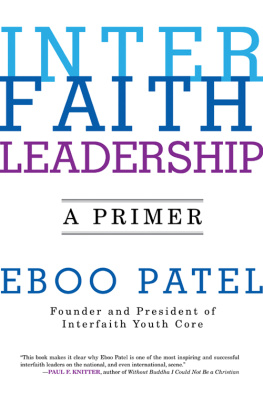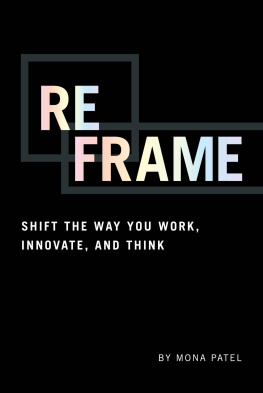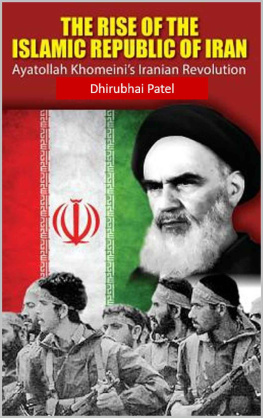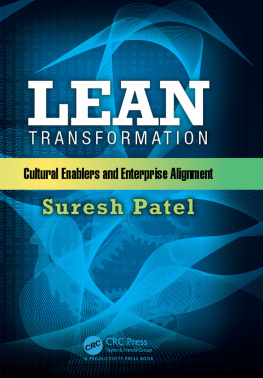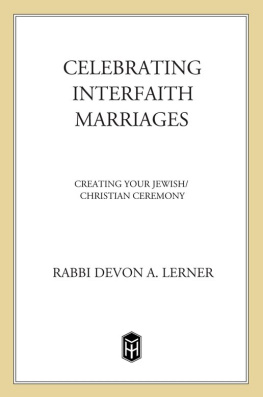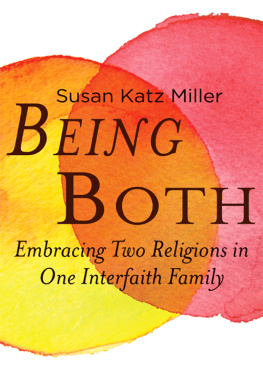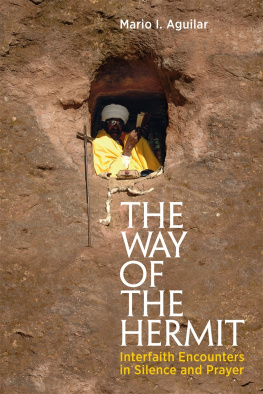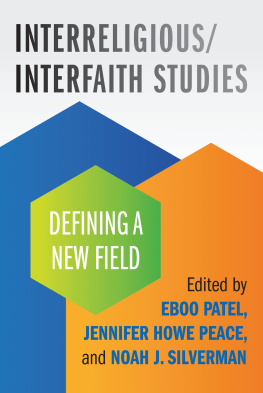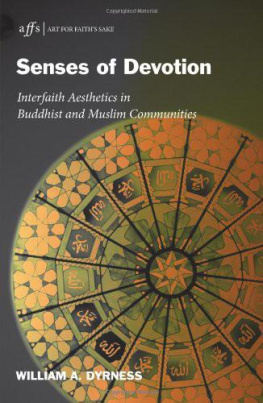BOOKS BY EBOO PATEL
Acts of Faith: The Story of an American Muslim, the Struggle for the Soul of a Generation
Sacred Ground: Pluralism, Prejudice, and the Promise of America
Building the Interfaith Youth Movement: Beyond Dialogue to Action (edited with Patrice Brodeur)
to the people in the middle, building
Democracy, in its essence and genius, is imaginative love for and identification with a community with which, much of the time and in many ways, one may be in profound disagreement.
MARILYNNE ROBINSON,
Imagination and Community
INTRODUCTION
What Is Interfaith Leadership?
Ruth Messinger, the former president of the American Jewish World Service, has a powerful story of interfaith leadership. She grew up in an observant Jewish home in New York City, attended Radcliffe College in the early 1960s, married, and started seeking a way for her (then) husband to avoid the Vietnam War. His best option was finding work as a doctor in a government facility. They tried getting a position in a major city on one of the coasts, but somehow wound up being assigned to a small town in Oklahoma. Ruth decided to make the most of an unfamiliar situation and enrolled in the masters program in social work at the University of Oklahoma.
After completing her degree in 1964, Ruth took a job as the director of child welfare programs for two counties in western Oklahoma. She quickly discovered that what passed for childrens services in the area was an ugly collusion between the sheriff and Ms. Lucy, a woman who ran a ramshackle orphanage. Children and teenagers caught running away from home or committing minor crimes were thrown into jail and then sent to Ms. Lucys orphanage. Ruths first order of business was to inform the sheriff that putting a minor into jail was illegal. Moreover, Ms. Lucys facility was totally unfit for children. If the minors family was indeed unsuitable, the state had to provide an appropriate foster home for the child.
The sheriffs quick retort was that there were no foster homes in the area, and thus his was the only game in town. Then he lit into Ruth. She was clearly not from around here, she was a woman, andto top it all offshe was Jewish. She could go take a hike.
Ruth knew that part of what the sheriff was saying was true; there were no foster homes in the area for the youth who needed them. Her job was not just to end the terrible current practice; it was to create a better alternative. She started going for walks around various neighborhoods in her town to get to know the area better, pushing a stroller with her newborn baby inside. She noticed that many of the private residences were marked with religious signs like The Church of Jesus Christ Who Died for Our Sins.
Ruth knocked on doors and began conversations with the people who answered. She introduced herself and explained that her job was to help vulnerable children in western Oklahoma. She detailed the challenges facing troubled youth in the area and expressed that her highest hope was to help those kids find loving homes. Based on the religious sign she had seen outside the house, it looked like the residence doubled as a place for worship and community gathering. Might they help?
The most common response went something like this: Come back on Wednesday morning for our praise service and speak to the group.
There seemed to be some kind of religious gathering taking place at one house-church or another just about every day of the week and just about every hour of the day. Ruth sat through countless sermons, praise songs, and altar calls. As promised, the preacher would give her a chance to speak. Ruth would rise and tell stories of local children and teenagers in need. When she was done, the preacher would quote scripture and say to the gathered worshippers, Who here will answer the call of God and serve as loving families for these young people?
People would literally line up to help, Ruth said. It was amazing to witness. Those evangelical house-churches built the child welfare network in western Oklahoma.
I found one particular story that Ruth told especially moving. Every few weeks or so, Ruth would get a call from the sheriff in the middle of the night. As the number of foster families in the area grew, he had grudgingly stopped his practice of throwing troubled youth in jail and carting them off to Ms. Lucys facility. Instead, when he caught a runaway in the middle of the night, he phoned Ruth. If you cant find a home for this kid within the hour, shes going to jail, he would say in his gruff voice. Without getting out of bed, Ruth would phone her friend Stacy, a devout evangelical who had told Ruth that she felt called by God to do whatever she could to help youth in need. Ruth would explain the situation, and Stacy would say, Have the sheriff drop the girl off at my house. Ruth relayed the message to the sheriff. Stacy would meet the child at the door with a cup of hot cocoa, make her feel comfortable, and give her a bed for the night. Ruth would show up the next morning to work out a long-term solution.
Even as things got better, they were far from easy. Part of this had to do with Ruths being Jewish in a time and place rife with anti-Semitism. Ruth recalls riding in a car with a group of older women when one of them said that she was off to do her shopping and aimed to Jew down the prices. She also remembers the day her colleagues at work found out that she was Jewish. She was met with surprised looks and a comment from her boss: Well, you dont look Jewish. Many of the things that she heard in local churches contradicted her faith; some even offended her. One time, she was invited to a Sunday morning service at one of the fancier churches in town. It turned out to be Palm Sunday, and the pastor gave a fiery sermon on the killing of Jesusby Jews.
Ruth was deeply offended and resolved to use the moment as an opportunity for education. She invited the pastor over to her home for tea and what we would now call an interfaith conversation. Ruth shared that not only was the pastor factually wrong about his claim that Jews killed Jesus, but that she was Jewish and felt hurt and insulted by his sermon. Moreover, America was growing increasingly religiously diverse. Sermons like the one he just gave were sure to cause division. And then Ruth pointed out a powerful area of commonality between her faith and his: Jesus was Jewish. Instead of preaching insulting and divisive falsehoods, why not focus on how the actions of Jesus inspired both Jews and Christians to serve others?
Just as Ruth helped the Christians she worked with understand Judaism, so she developed a deeper appreciation for evangelical Christianity during her time in western Oklahoma. She was especially struck by the ethic of service in the community: They preached that God meant for us to serve others, and they practiced what they preached. When the pastor asked for volunteers and quoted scripture, people lined up to help.
The 1960s were a tumultuous timethe womens movement, the counterculture, the protests against the Vietnam War. Ruth Messinger and those evangelicals in western Oklahoma lined up on different sides of most of those major issues. Ruth was a graduate schooleducated liberal Jewish feminist from New York who found herself in Oklahoma because her husband was fleeing the Vietnam War. The evangelicals she was working with helped make Merle Haggards Okie from Muskogee, with its lyrics celebrating a traditional understanding of American patriotism (against draft-dodging; for waving the flag on Main Street), one of the most popular songs of the era. Suffice it to say there were significant differences between Ruth and the majority of her evangelical partners on most of the issues of the time.

